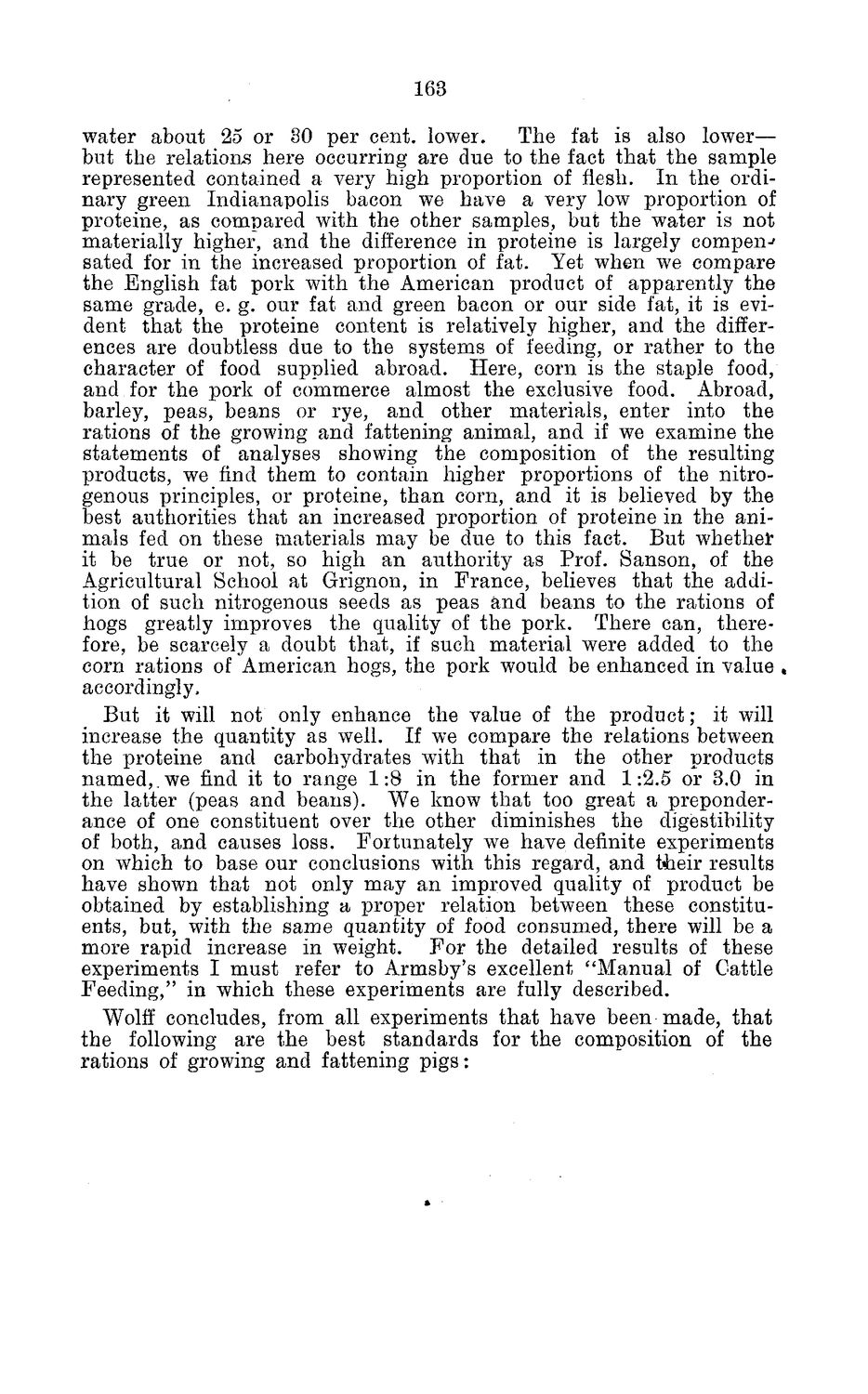| |
| |
Caption: Board of Trustees Minutes - 1884
This is a reduced-resolution page image for fast online browsing.

EXTRACTED TEXT FROM PAGE:
163 water about 25 or 30 per cent, lower. The fat is also lower— but the relations here occurriDg are due to the fact that the sample represented contained a very high proportion of flesh. In the ordinary green Indianapolis bacon we have a very low proportion of proteine, as compared with the other samples, but the water is not materially higher, and the difference in proteine is largely compen^ sated for in the increased proportion of fat. Yet when we compare the English fat pork with the American product of apparently the same grade, e. g. our fat and green bacon or our side fat, it is evident that the proteine content is relatively higher, and the differences are doubtless due to the systems of feeding, or rather to the character of food supplied abroad. Here, corn is the staple food, and for the pork of commerce almost the exclusive food. Abroad, barley, peas, beans or rye, and other materials, enter into the rations of the growing and fattening animal, and if we examine the statements of analyses showing the composition of the resulting products, we find them to contain higher proportions of the nitrogenous principles, or proteine, than corn, and it is believed by the best authorities that an increased proportion of proteine in the animals fed on these materials may be due to this fact. But whether it be true or not, so high an authority as Prof. Sanson, of the Agricultural School at Grignon, in France, believes that the addition of such nitrogenous seeds as peas and beans to the rations of hogs greatly improves the quality of the pork. There can, therefore, be scarcely a doubt that, if such material were added to the corn rations of American hogs, the pork would be enhanced in value » accordingly, But it will not only enhance the value of the product; it will increase the quantity as well. If we compare the relations between the proteine and carbohydrates with that in the other products named,.we find it to range 1:8 in the former and 1:2.5 or 3.0 in the latter (peas and beans). We know that too great a preponderance of one constituent over the other diminishes the digestibility of both, and causes loss. Fortunately we have definite experiments on which to base our conclusions with this regard, and their results have shown that not only may an improved quality of product be obtained by establishing a proper relation between these constituents, but, with the same quantity of food consumed, there will be a more rapid increase in weight. For the detailed results of these experiments I must refer to Armsby's excellent "Manual of Cattle Feeding," in which these experiments are fully described. Wolff concludes, from all experiments that have been made, that the following are the best standards for the composition of the rations of growing and fattening pigs:
| |